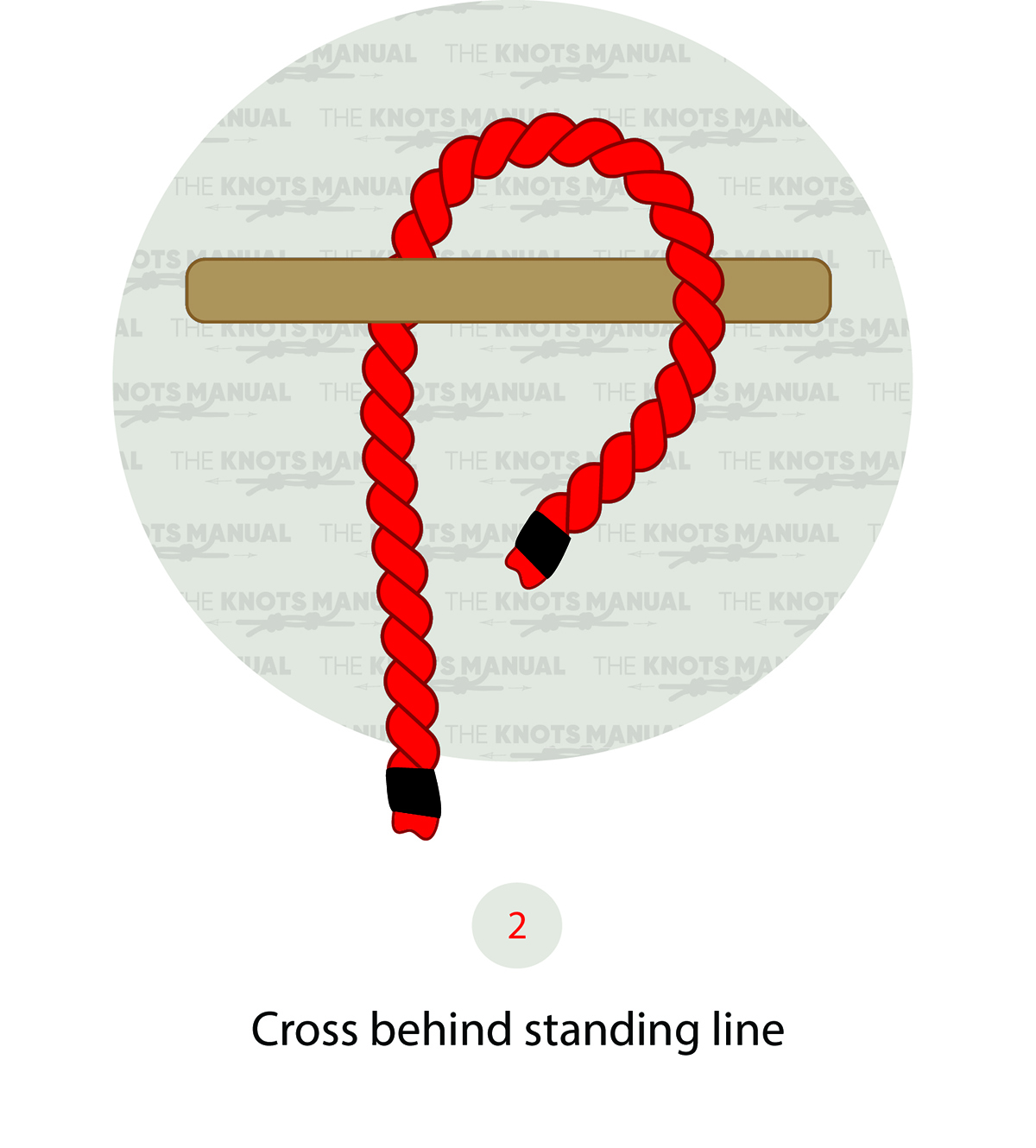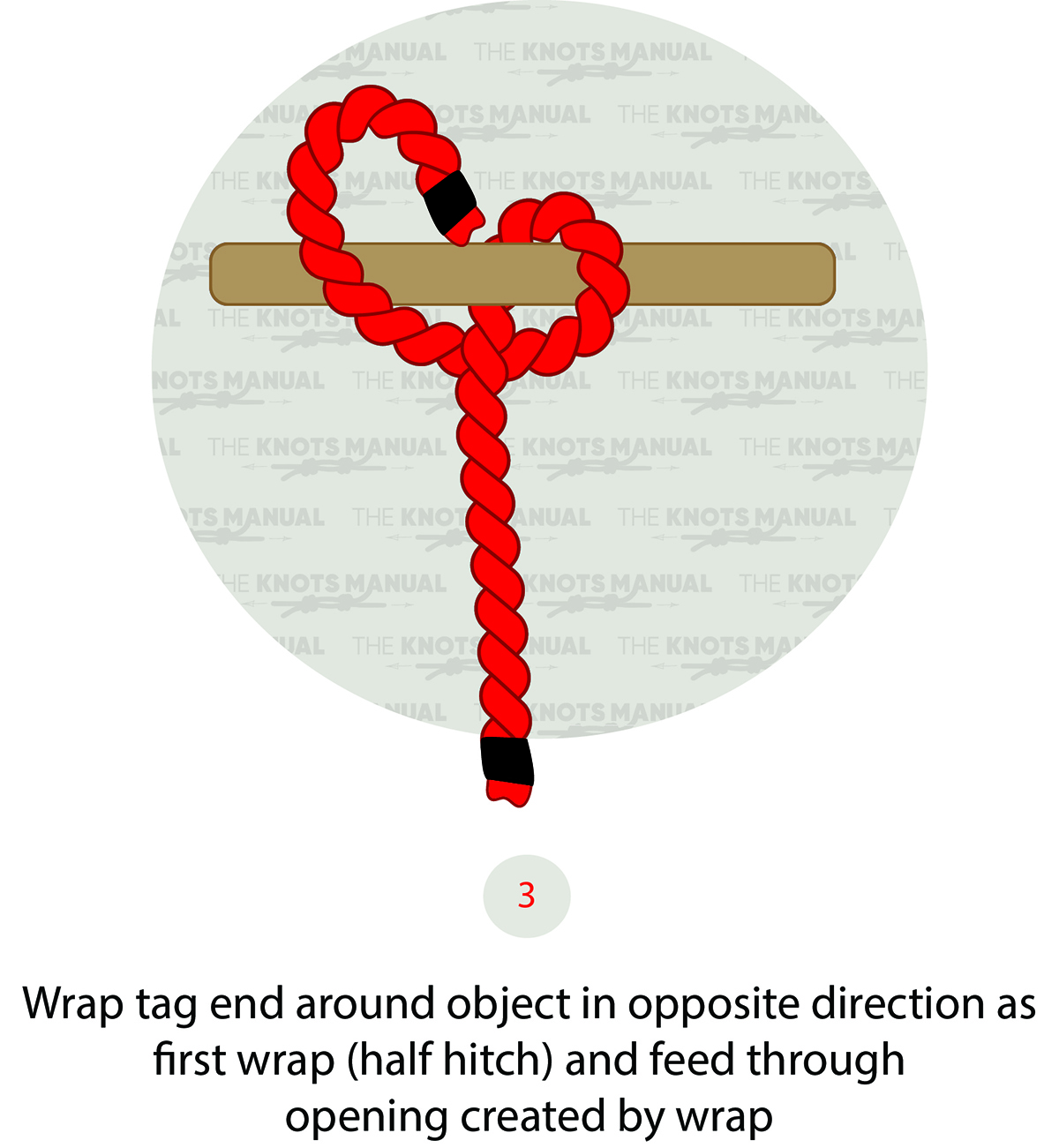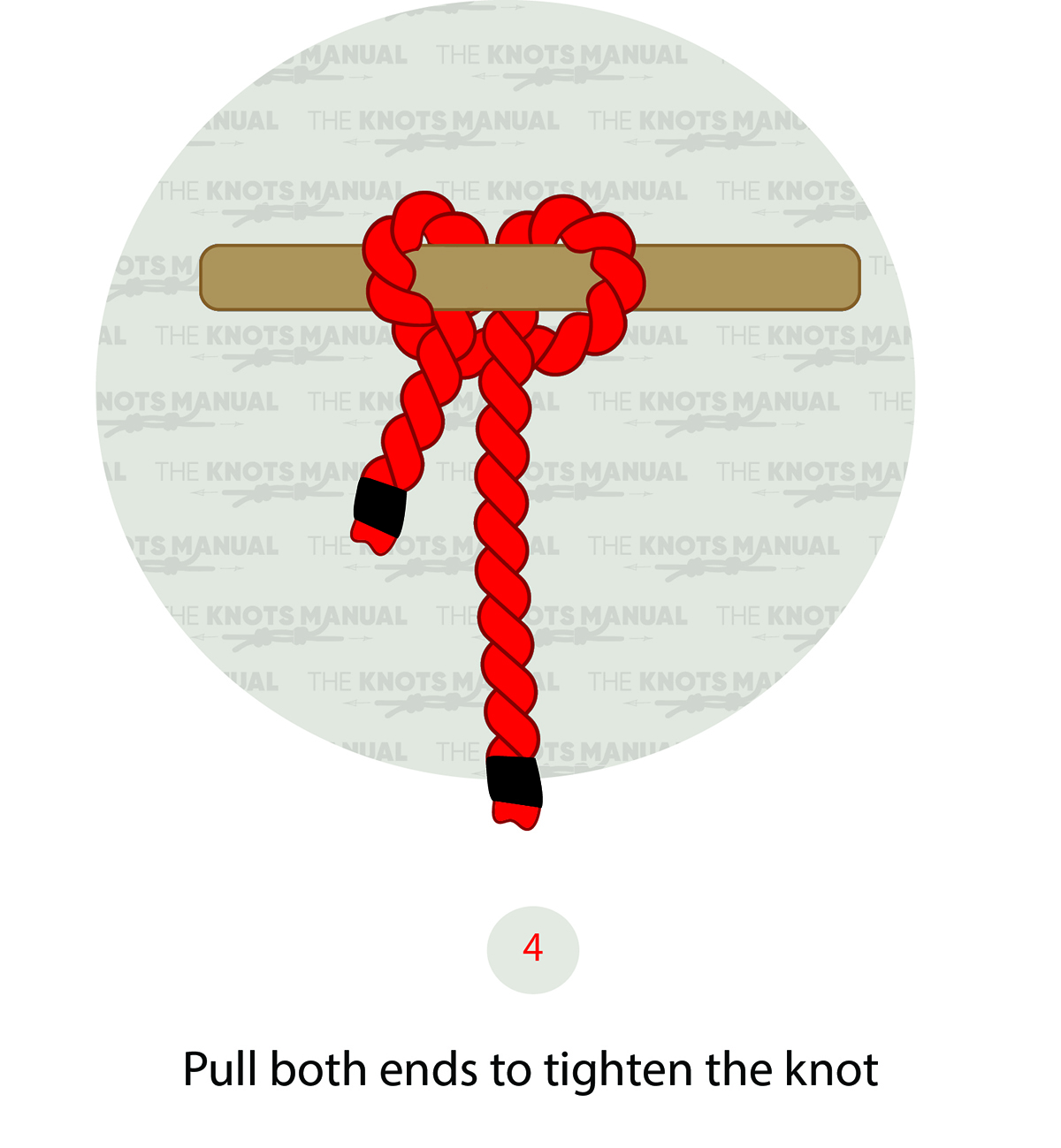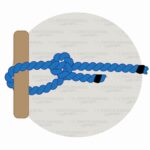The Cow Hitch is a very simple knot used to attach the end of a rope to a post or support. Its name stems from the fact that it is sometimes used to tie cows to a post. It isn’t a very reliable hitch, so it should only be used for simple tasks.
This knot has a few other names as well, including the Lark’s Head, Lark’s Knot, and Lanyard Hitch.
Quick Guide: Tying a Cow Hitch Knot
To tie the Cow Hitch, wrap the working end around the support. Then go behind the standing line, and finally create another loop only in the other direction. Make sure that the working end exists parallel to the standing end.
It’s very similar in structure (and strength) to the Clove Hitch. The only difference is that the second loop is tied in the other direction.
You should keep the working end rather long to account for slippage. It isn’t a very secure knot, so it can come loose very easily. It works better with natural ropes tied around wooden posts. With synthetic ropes tied around metal objects, the knot can barely hold any weight due to the lack of friction.
It’s recommended to tie a stopper knot on the working end to improve its strength. You can also tuck the working end under both loops (parallel to the post) to create a much stronger variation.

Pros and Cons of the Cow Hitch Knot
The main benefit of the Cow Hitch is that it is very easy to tie and remember. It also unties very easily, even after shock loads.
The main disadvantage of the Cow Hitch is that it isn’t reliable. It can only be used for simple tasks, like tieing an animal to a post for a quick period of time. That’s because as the animal moves, the knot will start to untie.
If a more reliable solution is needed, then other hitches should be used instead, like the Buntline Hitch or the Anchor Hitch.
Common Uses for the Cow Hitch Knot
The Cow Hitch is sometimes used to temporarily tie animals to a post. It can be used for other temporary situations as well. For example, tying a rope to a tree to hold tension, tying together timber, and hanging food in an anchor to avoid rats.
It’s also used to attach zippers and tags to backpacks and luggage. But in this variation, both ends are fixed to the zipper (or the tag), which makes the knot secure.
Knots Like the Cow Hitch
Girth Hitch: An identical knot to the Cow Hitch. The only difference is that there is no working and standing end because it’s tied with a loop.
Clove Hitch: A very similar knot to the Cow Hitch, which is also similarly strong and easy to tie. Its only difference is that the second loop is tied in the same direction as the first one.
Buntline Hitch: This hitch is much more secure than the Cow Hitch. It’s also very easy to tie and it unties easily even after heavy loads. It’s preferable to use over the Cow Hitch in most situations.
Timber Hitch: The timber hitch is preferable to use over the Cow Hitch when tied around larger-diameter objects. It’s easy to tie, more reliable, and also very easy to untie. It’s most commonly used to carry timber back to the fireplace.
Tumble Hitch: A complicated knot, but it can be used in places where the Cow Hitch is a good option. It’s more secure and unties even more easily because it’s a quick-release knot.
Anchor Hitch: The Anchor Knot is one of the strongest hitches out there. That’s why it’s often used to permanently attach to boat anchors. It’s also somewhat easy to untie, even after loading with heavy loads.
Step-By-Step Guide: Tying the Cow Hitch Knot

A step-by-step guide on how to tie the Cow Hitch Knot.
Step 1:

Wrap the end of a rope around the support.
Step 2:

Pass the end behind the standing line.
Step 3:

Wrap the end around the support again, only from the other side.
Step 4:

Make sure that both ends exit parallel to one another.




